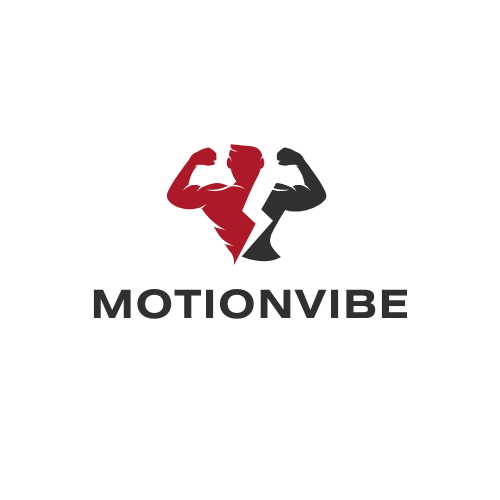Ever wonder why hitting the gym feels like a breath of fresh air—literally? When the body kicks into high gear during exercise, it doesn’t just sweat out the stress; it also supercharges the blood with oxygen. In fact, the concentration of oxygen in the bloodstream can double compared to when someone’s just lounging on the couch, binge-watching their favorite series.
Understanding Oxygen Concentration
Oxygen concentration significantly increases during exercise. Research indicates that this level can reach twice that of resting conditions. Such an increase occurs due to higher demand from muscles working harder.
The body employs various mechanisms to facilitate this uptake. One primary action involves the heart pumping blood more efficiently, delivering oxygen to active tissues. Increased respiration also plays a critical role, allowing for greater oxygen exchange in the lungs.
Efficient oxygen transportation supports enhanced physical performance. During intense workouts, oxygen-rich blood fuels energy production within muscle cells. This process, known as aerobic metabolism, generates ATP, the primary energy currency of the body.
Several factors influence the extent of oxygen concentration rise. Duration and intensity of exercise impact oxygen uptake levels. For instance, high-intensity interval training often leads to greater increases in blood oxygen concentration compared to moderate exercise.
Understanding these dynamics helps individuals optimize their fitness routines. By engaging in activities that elevate oxygen concentration, one can improve endurance and overall workout effectiveness. Tracking heart rates during exercise also provides additional insights into how the body responds to varying oxygen levels.
Scientific literature supports these observations, highlighting the importance of oxygen for physical performance. Such data underscores the benefits of maintaining a regular exercise routine to support optimal oxygen levels in the bloodstream.
The Physiology of Oxygen Transport

During exercise, the body’s demand for oxygen increases significantly. This heightened requirement results in a doubling of blood oxygen concentration compared to resting states.
Role of Hemoglobin
Hemoglobin plays a crucial role in oxygen transport within the bloodstream. It binds to oxygen molecules in the lungs and releases them into tissues during circulation. Each hemoglobin molecule can carry four oxygen molecules at a time. This capacity enhances the efficiency of oxygen delivery to active muscle cells. Consequently, a well-functioning hemoglobin system is vital for maintaining elevated oxygen levels during strenuous activities. People may observe increased hemoglobin levels through regular exercise, supporting their respiration and boosting overall endurance.
Mechanism of Oxygen Uptake
Oxygen uptake involves several physiological processes that optimize oxygen levels in the blood. When exercising, the respiratory rate increases, facilitating more oxygen intake into the lungs. Oxygen diffuses from the alveoli into the bloodstream, where it binds to hemoglobin. Concurrently, the heart pumps oxygen-rich blood throughout the body at a heightened rate. Muscles utilize the increased oxygen to produce energy through aerobic metabolism. Each of these elements contributes to the overall efficiency of oxygen uptake, enhancing performance during workouts and fostering recovery afterward.
Exercise Physiology and Oxygen Levels
During exercise, the body undergoes significant changes to optimize oxygen levels in the blood. These adaptations support enhanced physical performance and recovery.
Changes in Respiratory Rate
Increased physical activity causes the respiratory rate to rise. Breathing becomes deeper and more frequent, improving oxygen exchange in the lungs. This adjustment allows for more oxygen to enter the bloodstream. As a result, the body meets the heightened demand for oxygen during intense workouts. Studies indicate that trained athletes may experience even greater increases in respiratory rate compared to untrained individuals. Ensuring efficient oxygen uptake is essential for sustaining energy throughout various types of exercise.
Impact on Circulatory System
The circulatory system also adapts significantly during exercise. Heart rate elevates to pump oxygen-rich blood to active muscles more effectively. Enhanced cardiac output supports the increased demand for oxygen, enabling better performance and endurance. Blood vessels dilate in response to the need for more oxygen, allowing for improved blood flow. Research confirms that regular exercise leads to positive adaptations in the heart and blood vessels. These changes contribute to overall cardiovascular efficiency, promoting better oxygen delivery during workouts and faster recovery afterward.
Factors Influencing Oxygen Concentration
Oxygen concentration in the blood during exercise varies based on several factors. Understanding these influences can help individuals maximize their fitness results.
Fitness Levels
Fitness levels significantly affect how efficiently the body utilizes oxygen. Trained individuals exhibit enhanced aerobic capacity, enabling more effective oxygen transport and uptake during exercise. Untrained individuals may experience slower oxygen uptake, limiting their performance. Adaptations from regular training lead to increased hemoglobin levels, improving oxygen delivery to muscles. Individuals with higher fitness levels can maintain optimal oxygen saturation even during intense workouts. Research highlights that elite athletes often demonstrate remarkable increases in oxygen concentration, allowing them to perform at higher intensities for longer periods. Tracking progress in fitness levels provides valuable insights into how oxygen dynamics fluctuate with improvements in training.
Type of Exercise
The type of exercise also plays a critical role in determining oxygen concentration levels. Aerobic activities, such as running or cycling, typically lead to greater increases in oxygen saturation compared to anaerobic exercises like weightlifting. During aerobic exercise, sustained muscle activity requires continuous oxygen supply, prompting the body to optimize oxygen delivery. High-intensity interval training (HIIT) generates significant spikes in oxygen uptake, resulting in pronounced increases in oxygen levels in the blood. Conversely, less demanding activities yield milder oxygen enhancements. Choosing the right type of exercise impacts overall performance, as specific training tailored to oxygen dynamics can enhance endurance and efficiency. Different exercises dictate how the body responds, ultimately shaping the oxygen concentration in the blood.
Implications for Athletes
Oxygen concentration significantly impacts athletic performance. Increased oxygen levels during exercise enhance energy production in muscle cells, allowing athletes to perform at higher intensities for longer durations. During rigorous workouts, the heart pumps oxygen-rich blood, effectively delivering it to active muscles.
Regular training boosts hemoglobin levels, promoting better oxygen transport. Enhanced aerobic capacity leads to improved endurance and quicker recovery times. Athletes engaging in high-intensity interval training often experience substantial increases in oxygen uptake, directly influencing their performance outcomes.
Changes in respiratory rates during exercise aid in optimizing oxygen exchange. With deeper and more frequent breaths, oxygen enters the bloodstream more efficiently. Adaptations in the circulatory system, including elevated heart rates and dilated blood vessels, support increased demands for oxygen delivery.
Aerobic exercises, such as running or cycling, typically lead to greater increases in oxygen saturation compared to anaerobic exercises like weightlifting. Athletes thrive in environments that encourage maximum oxygen utilization.
Fitness levels also dictate how effectively individuals can uptake oxygen during workouts. Trained athletes generally demonstrate faster oxygen uptake rates than untrained individuals. Tailoring training routines to focus on aerobic capacity can yield significant performance benefits.
Recognizing these physiological adaptations equips athletes with knowledge to optimize their training regimens. By understanding the role of oxygen concentration during exercise, athletes can implement strategies that lead to improved stamina and enhanced overall performance.
Conclusion
The remarkable increase in oxygen concentration during exercise highlights the body’s incredible adaptability. As individuals engage in physical activity, their circulatory and respiratory systems work in harmony to meet the heightened oxygen demands. This not only fuels energy production but also enhances overall performance and recovery.
Regular exercise fosters improvements in oxygen transport and uptake, benefiting both endurance and athletic capabilities. By understanding these physiological changes, individuals can better tailor their workouts to maximize results. Embracing a consistent exercise routine is key to unlocking the full potential of oxygen dynamics, ultimately leading to a healthier and more active lifestyle.

